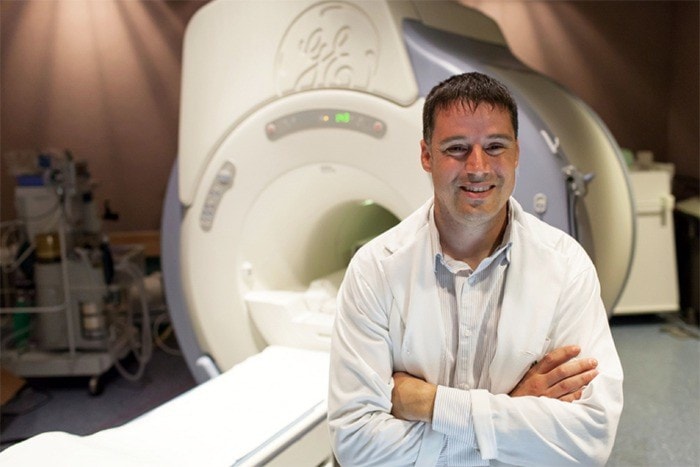A brain imaging research team led by Simon Fraser University neuroscientist Dr. Ryan D’Arcy has found a new way to help surgeons more accurately plan for surgical treatment in epilepsy.
The results of a recent study using magnetoencephalography (MEG) have been published in the field's highest impact journal, Human Brain Mapping. To showcase the study, the journal highlighted the novel images of MEG activity on the August 2013 cover.
D'Arcy and his team used MEG technology to produce detailed spatial maps of critical language functions in order to better enable pre-operative planning for better surgical outcomes.
The cover image shows the focus of seizure activity — where epileptic electrical “storms” develop — in an individual before surgery. Critical language activity is displayed in colour, with the spectrum from warmer reds to cooler blues showing the relative involvement of the left and right hemispheres, respectively.
In this case, the seizure location was outside of key language areas, a portion of the brain was safely removed, and the individual showed a seizure-free outcome.
“When carrying out brain surgery it’s imperative not only to determine where the areas are to treat, but whether the critical regions that carry out higher functions like language and memory will be affected,” says D’Arcy, a professor in SFU’s schools of engineering and computing sciences.
D'Arcy also holds the Surrey Memorial Hospital Foundation B.C. Leadership Chair in Multimodal Technology for Healthcare Innovation at Surrey Memorial Hospital. His brain mapping work was developed in Halifax, where he laid the groundwork for the current study.
Now establishing labs in Surrey Memorial Hospital, D'Arcy continues this work in MEG through collaboration with Fraser Health.
D’Arcy notes that SFU has been at the forefront of MEG technology for many years and was a pioneer in its development, resulting in the university’s first spin-off company, CTF Systems, nearly 30 years ago.
In co-leading the creation of Innovation Boulevard – a high-technology health sector being developed in Surrey — he plans to further advance brain-based technologies like MEG for both the critical care and point-of-care environments.
Simon Fraser University is Canada's top-ranked comprehensive university and one of the top 50 universities in the world under 50 years old. SFU has campuses in Vancouver, Burnaby and Surrey.
